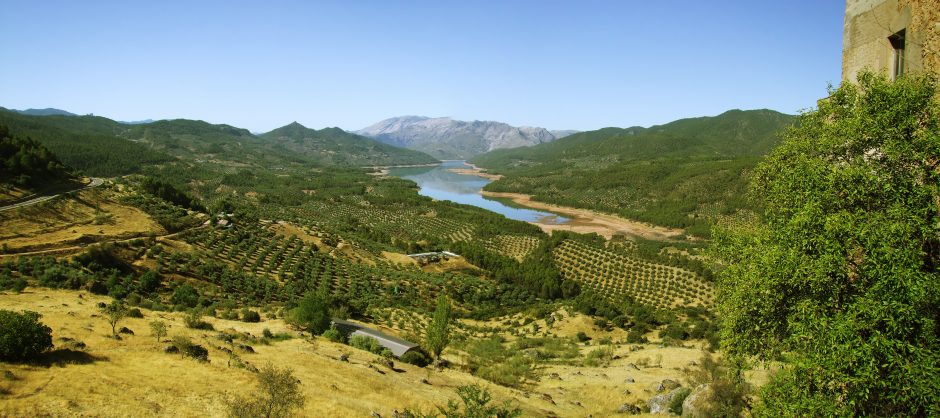People-powered resilience: Andalusia announces new climate action plan

The region’s climate action plan has been announced, with the Forging Resilience in Andalusia project, a chapter of the Climate KIC Deep Demonstration Resilient Regions programme, bringing much to the process.
Andalusia is the southernmost region of Spain. Covering 800 kilometres of coastline, it’s a region famed for its sunshine, beaches, rugged mountains, tourism and agricultural history.
Andalusia is less-known for its ambition to be a world leader in resilience and adaptation; a goal partly borne from necessity because, due to its geographical and climatic conditions, Andalusia is witnessing the worsening impacts of climate change on its territory.
The region is experiencing an increasing number of droughts and wildfires, and oppressive heatwaves during the summer months. In September, the region was hit with destructive flooding, with over 11cm of rain falling in Huelva in just one hour.
Mitigation and adaptation to climate change have consequently been priorities for the Andalusian Government, and on October 13th the Governing Council approved the Andalusian Climate Action Plan 2030 (PAAC 2030), making Andalusia the first Spanish community to approve plans in line with the new state law on climate change.
Risks and forging resilience
The Forging Resilience in Andalusia project, or Forjando Resiliencia en Andalucía, is co-financed by Climate KIC and part of the Deep Demonstration Resilient Regions programme. The programme contributed to the PAAC 2030 process by developing sectoral and multisectoral workshops in 2020 which collectively assessed the different climate risks in Andalusia, and co-designed a portfolio of actions for resilience and adaptation.
Identifying the dangers, impacts and vulnerabilities of climate change impacts on areas, and prioritising specific risks that need to be addressed in different regional environments, is a critical part of building resilience and will ultimately enable local and regional communities to better manage shocks and stresses caused by climate change.
The results of the sectoral workshops were analysed, and a series of preliminary conclusions were drawn up, with the main vulnerabilities identified based on the demand and availability of water. Extraction of water from aquifers, extraction wells, water reserves and lack of water were all highlighted in the PAAC chapter focusing on adaptation, which drew on the conclusions of the workshop. Other risks mentioned included intense rainfall, increasing sea levels and subsequent erosion, and extreme weather events like floods and heat waves, plus the knock-on potential social impacts of all these events, like unemployment or depopulation.
“But with vulnerabilities differing right down to the provincial level, the local aspect cannot be overlooked”, said Maria Lopez Sanchís from General Directorate of Environmental Quality and Climate Change, Junta de Andalucia.
“Our process also identified hazards and impacts taking into account territorial differences,” said Lopez Sanchís. “This will be more relevant in the different operational programmes of the PAAC, because the plan urges different areas to incorporate the territorial perspective in the risk assessments and definition of adaptation measures whenever possible. To build true resilience, we have to deeply consider geographical differences and the specific characteristics that determine the vulnerability of each territory’s exposure to climate hazards. Then we need to place special emphasis on the most vulnerable spaces.”
People power towards a better scenario
The role of the workshops however wasn’t only to analyse the current risks, but also to look forward to how an ideal scenario for Andalusia could look. This meant identifying the levers of change that need to be engaged for that to be achieved and drawing up a roadmap of innovation options and portfolio priorities.
“As well as analysing the current situation, we also carried out an exercise to determine the ideal climate change scenario,” said Lopez Sanchís. “We want to look to the future and identify the levers of change that will allow us to define the means by which we can achieve a more resilient Andalusia,” she said. Lopez Sanchís added that a number of the levers identified to help Andalusia reach this goal are included in the PAAC report, including ecosystem management and land-use planning, but also people-powered interventions like education and behavioural change.
“In building this vision, citizen engagement is critical,” said Lopez Sanchís. “Through our different online workshops, we carried out a process of public participation aligned with the consultation and public exposure phase of the Andalusian Climate Action Plan.”
Both formal and informal education, as well as behavioural change, and political, social, cultural and ecological decisions are all addressed in the new climate plan, as is the promotion of sustainable lifestyles, which means rethinking our ways of life, how we buy and what we consume.
“The people piece is recognised as one of the required ‘adaptation dimensions’ in order to achieve the adaptation objectives set by the PAAC,” said Lopez Sanchís. “To meet the challenge of climate change, and to build resilience and adapt, yes, we need to recognise and analyse the threats, but then we also need to take whole communities with us as we develop a roadmap of innovation that will enable us to survive and thrive. Only people can make the PAAC happen.”
Climate KIC is proud to be a partner of the UN High Level Champion’s Race to Resilience campaign, which is working to step-up global ambition for climate resilience in the run-up to COP26 and beyond. For more on the Race to Resilience partners and initiatives, or how to get involved, see here.
